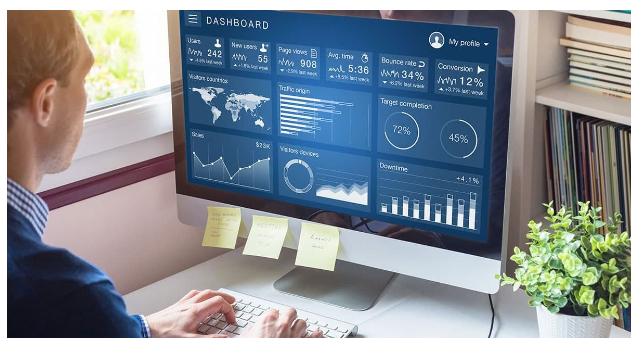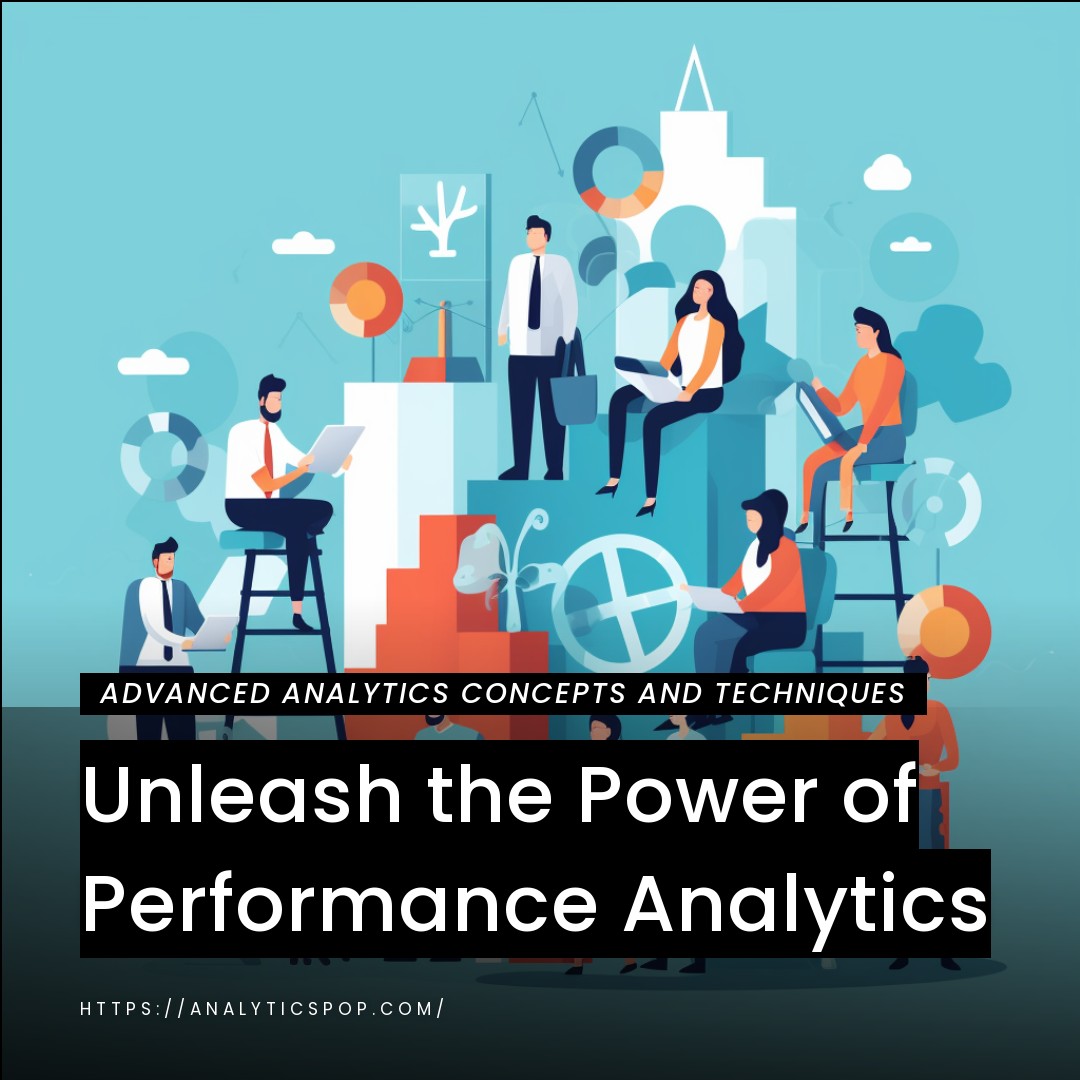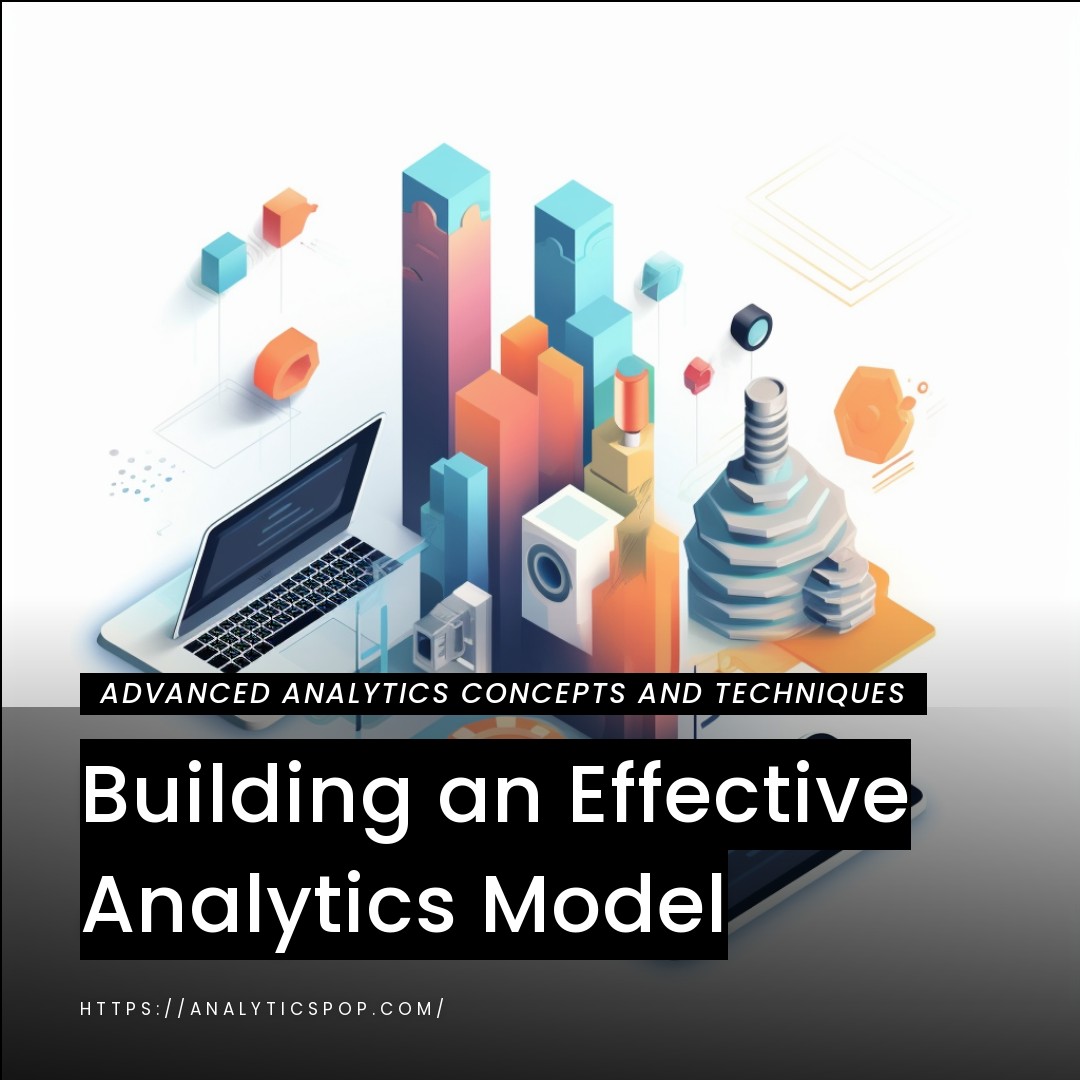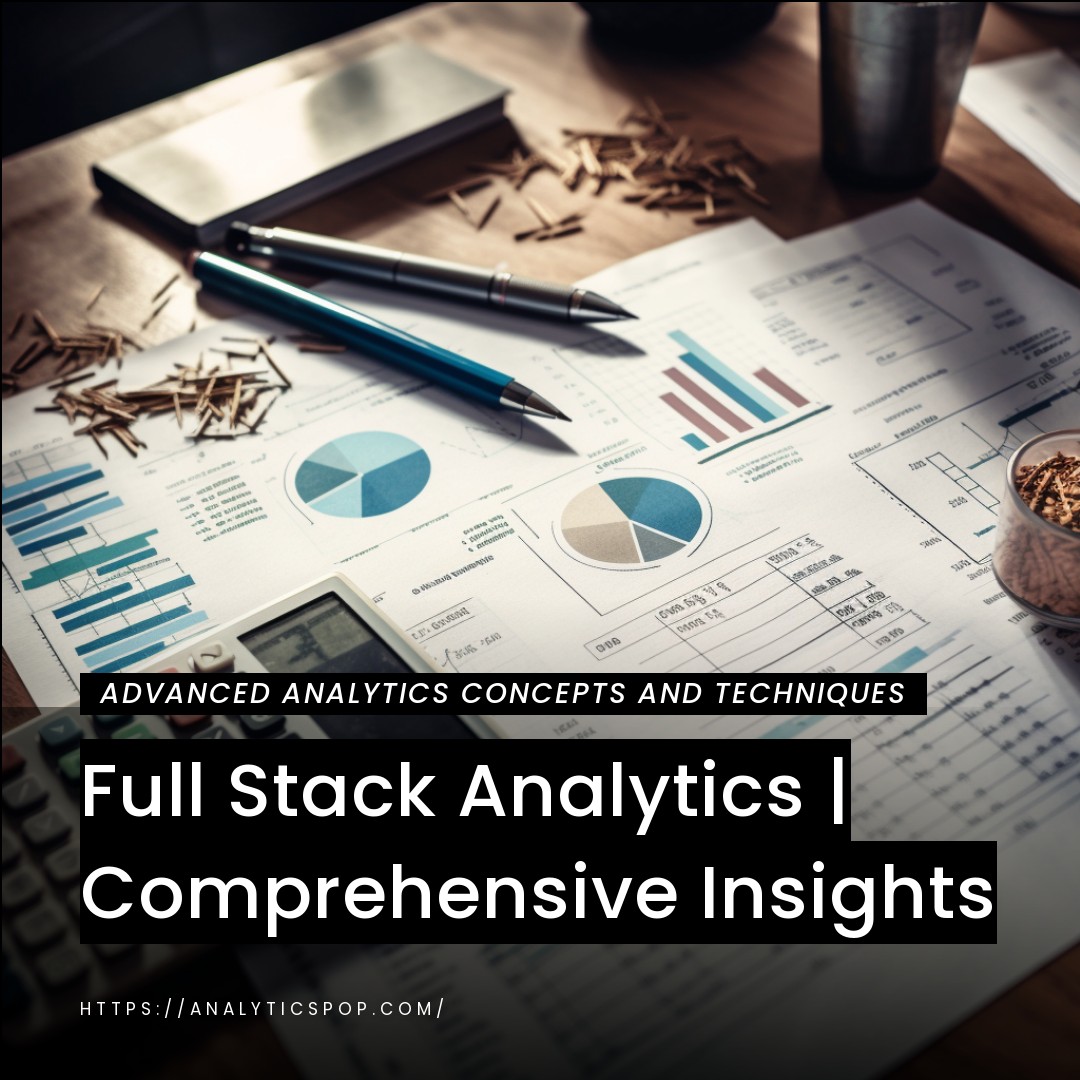Performance analytics is the process of analyzing and measuring the performance of a business, website, or application. With the help of performance analytics, companies can understand how their websites and applications perform and identify improvement areas.
By unleashing the power of performance analytics, businesses can gain valuable insights that can help them optimize their operations and improve their bottom line.
- One of the main benefits of performance analytics is that it provides businesses with real-time data on how their websites and applications are performing. This data helps companies identify issues and make changes quickly, improving the user experience and increasing engagement.
For example, suppose a business notices users abandoning their website at a certain point in the checkout process. In that case, they can use performance analytics to identify the issue and make changes to improve the process. - Additionally, performance analytics can help businesses optimize their marketing efforts. Companies can identify which marketing channels drive the most traffic and conversions by analyzing user behavior and engagement data. They can then focus on these channels and optimize their campaigns to improve their ROI.
Performance analytics is a powerful tool that can help businesses optimize their operations and improve their bottom line. By using performance analytics to gain insights into user behavior, companies can identify areas for improvement and make data-driven decisions that can help them succeed in today’s competitive marketplace.
What is performance analytics?
Performance analytics is the process of collecting, analyzing, and interpreting data related to the performance of a business, website, or application. It involves using data and metrics to measure key performance indicators (KPIs) that provide insights into how well a company achieves its goals.
Performance analytics can help businesses understand their strengths and weaknesses, identify opportunities for improvement, and make data-driven decisions to optimize their operations.
Performance analytics involves using various tools and techniques to collect and analyze data, such as web analytics, business intelligence software, and data visualization tools. Businesses can use these tools to track KPIs such as website traffic, conversion rates, revenue, and customer engagement.
With the insights gained from performance analytics, businesses can make informed decisions on optimizing their processes, improving user experience, and increasing their bottom line.
Why is performance analytics important?
Performance analytics is essential for several reasons.
- First and foremost, it provides businesses with valuable insights into their operations and performance. By collecting and analyzing data on key performance indicators, companies can identify areas where they excel and areas that require improvement. This information can help businesses make data-driven decisions that optimize their operations and improve their bottom line.
- Secondly, performance analytics allows businesses to track and measure their progress over time. By regularly monitoring their KPIs, companies can see how their performance changes and identify trends that may impact their operations. This information can help businesses adjust their strategies and make proactive changes to stay ahead of the competition.
- Thirdly, performance analytics can help businesses improve their customer experience. By tracking metrics such as website traffic, conversion rates, and user engagement, companies can identify areas where their customers may be struggling or experiencing issues. This information can help businesses make changes that improve customer experience and increase customer satisfaction.
- Finally, performance analytics can help businesses optimize their marketing efforts. Companies can identify which marketing channels drive the most traffic and conversions by analyzing user behavior and engagement data. They can then focus on these channels and optimize their campaigns to improve their return on investment (ROI).
Performance analytics is important because it gives businesses valuable insights, helps them track their progress, improves customer experience, and optimizes their marketing efforts.

Defining Business Goals and KPIs
Defining business goals and key performance indicators (KPIs) is essential in measuring business success. Business goals are specific, measurable, and time-bound objectives a company wants to achieve. KPIs are metrics used to measure progress toward achieving these goals.
By defining clear and specific business goals and KPIs, businesses can effectively track progress, identify areas for improvement, and make data-driven decisions.
When defining business goals, it is essential to ensure they are aligned with the overall vision and mission of the company. They should also be specific and measurable, such as increasing revenue by a certain percentage, reducing costs, or improving customer satisfaction.
KPIs are metrics used to measure progress toward achieving goals. They are often quantifiable and time-bound and track performance. Examples of KPIs include website traffic, conversion rates, revenue growth, customer retention, and employee productivity. Additionally, business goals should be time-bound.
Ensuring they are aligned with the business goals is essential to define KPIs effectively. Each business goal should have one or more associated KPIs that measure progress toward achieving that goal. Additionally, KPIs should be tracked over time to ensure progress and identify areas where improvements can be made.
Defining business goals and KPIs is an essential step in measuring business success. Business goals should be specific, measurable, time-bound, and aligned with the company’s vision and mission. KPIs should be used to measure progress toward achieving these goals and should be specific, quantifiable, and time-bound.
By defining clear business goals and KPIs, businesses can effectively track progress and make data-driven decisions to achieve success.
Performance Metrics
Performance metrics are measurements used to evaluate the performance of a business, website, or application. These metrics are typically used to track progress toward achieving specific business goals and KPIs and provide insights into how well the company performs.
There are several types of performance metrics that businesses can use, including:
- Financial Metrics – These metrics measure the financial performance of a business, such as revenue, profit margin, and return on investment (ROI).
- Customer Metrics – These metrics measure customer satisfaction, loyalty, and engagement. Examples include Net Promoter Score (NPS), customer retention rate, and customer lifetime value (CLV).
- Website Metrics – These metrics measure a website’s performance, such as website traffic, bounce rate, conversion rate, and time on page.
- Employee Metrics – These metrics measure employee performance, such as productivity, job satisfaction, and turnover rate.
- Sales Metrics – These metrics measure sales performance, such as sales growth, sales per employee, and sales by region.
By using performance metrics, businesses can track progress toward achieving their goals and identify areas for improvement. For example, if a company is not fulfilling its revenue targets, it may need to re-evaluate its marketing and sales strategies. Alternatively, if a website has a high bounce rate, the business may need to improve the user experience to keep visitors engaged.
Performance metrics are essential tools for measuring business performance and identifying areas for improvement. By tracking financial, customer, website, employee, and sales metrics, businesses can make data-driven decisions to optimize their operations and achieve their goals.
Dashboards
A dashboard is a visual display of data that provides an overview of key performance indicators (KPIs) and other metrics in a single, easy-to-read format. Businesses often use dashboards to track progress toward achieving specific goals and KPIs and provide insights into how well the company performs.
Dashboards typically include various visual elements, such as charts, graphs, tables, and gauges, allowing users to understand the presented data quickly. The data is often presented in real time, allowing businesses to make informed decisions based on up-to-date information.
There are several benefits to using dashboards in business, including:
- Improved decision-making – By presenting data clearly and concisely, dashboards allow businesses to make more informed decisions based on real-time information.
- Increased efficiency – Dashboards can help businesses identify areas to improve efficiency and reduce costs by tracking performance metrics such as productivity and resource utilization.
- Increased collaboration – Dashboards can be shared among teams, departments, and stakeholders, improving collaboration and alignment across the organization.
- Better communication – Dashboards provide a common language for discussing performance metrics and other KPIs, helping to ensure everyone is on the same page.
- Faster problem-solving – Dashboards allow businesses to quickly identify and address issues impacting performance, reducing the time and resources required to resolve problems.
Dashboards are a valuable tool for businesses looking to track performance metrics, identify areas for improvement, and make data-driven decisions. By providing a clear and concise overview of key metrics in a single, easy-to-read format, dashboards can help businesses optimize their operations and achieve their goals.

Data Visualization
Data visualization is the graphical representation of data and information. It uses visual elements such as charts, graphs, maps, and tables to help users understand and interpret complex data. Data visualization is a powerful tool for businesses, allowing them to communicate data-driven insights clearly and easily digestibly.
There are several benefits to using data visualization in business, including:
- Improved understanding – Data visualization makes it easier for users to understand complex data, enabling them to make better decisions based on the insights gained.
- Increased engagement – Visual elements such as charts and graphs are more engaging than text-based data, helping to keep users interested and focused.
- Enhanced communication – Data visualization provides a common language for discussing complex data, making it easier for teams and stakeholders to communicate insights and make data-driven decisions.
- Faster insights – Data visualization allows users to quickly identify trends and patterns in data, reducing the time and resources required to analyze and interpret data.
- Increased accuracy – Data visualization can help reduce the risk of errors or misunderstandings when communicating data through text-based reports.
Effective data visualization involves selecting the appropriate type of visual element for the presented data and ensuring the design is straightforward to understand. Data visualization can be used in various business contexts, including marketing, finance, operations, and customer service.
Data visualization is a powerful tool for businesses looking to communicate data-driven insights in a clear and easily digestible format. By using visual elements such as charts, graphs, and tables, companies can improve understanding, increase engagement, enhance communication, speed up insights, and increase accuracy.
Predictive Analytics
Predictive analytics is a form of advanced analytics that uses data, statistical algorithms, and machine learning techniques to identify the likelihood of future outcomes based on historical data. It involves analyzing patterns in data to identify trends, make predictions, and inform decision-making.
Predictive analytics can be used in various business contexts, such as marketing, finance, and operations. For example, predictive analytics can identify the most effective marketing channels and messages for reaching target audiences.
In finance, predictive analytics can identify potential risks and opportunities for investment. In operations, predictive analytics can be used to optimize supply chain management and production processes.
There are several benefits to using predictive analytics in business, including the following:
- Improved decision-making – Predictive analytics can help businesses make more informed and effective decisions by providing insights into likely future outcomes.
- Increased efficiency – Predictive analytics can help businesses identify areas where they can improve efficiency and reduce costs, such as optimizing supply chain management or reducing employee turnover.
- Enhanced customer experience – Predictive analytics can help businesses better understand customer behavior and preferences, allowing them to deliver more personalized and relevant experiences.
- Competitive advantage – Predictive analytics can give businesses a competitive advantage by helping them stay ahead of market trends and identify growth opportunities.
- Risk reduction – Predictive analytics can help businesses identify potential risks and take steps to mitigate them, reducing the likelihood of adverse outcomes.
Predictive analytics is a powerful tool for businesses seeking insights into future outcomes and making data-driven decisions. Companies can use data, statistical algorithms, and machine learning techniques to identify trends, make predictions, and optimize operations for improved efficiency, enhanced customer experience, and competitive advantage.
FAQs
How can performance analytics help improve business operations?
Performance analytics can help improve business operations in several ways:
- Identifying areas for improvement – Performance analytics allows businesses to track key performance indicators (KPIs) and identify areas where they may fall short. By identifying areas for improvement, companies can take proactive steps to optimize their operations and improve overall performance.
- Enhancing customer experience – Performance analytics can help businesses understand how customers interact with their products, services, and websites. By analyzing user behavior and engagement data, companies can identify pain points and areas for improvement, ultimately leading to a better customer experience.
- Optimizing marketing efforts – Performance analytics can help businesses understand which marketing channels and campaigns drive the most traffic and conversions. Companies can improve their return on investment (ROI) and achieve better results by optimizing marketing efforts based on performance data.
- Improving productivity – Performance analytics can help businesses identify inefficiencies and improve productivity. By tracking employee productivity and resource utilization metrics, companies can identify opportunities to streamline processes and reduce costs.
- Making data-driven decisions – Performance analytics provides businesses with valuable insights that inform decision-making. Companies can make informed decisions that optimize operations, reduce costs, and improve overall performance by analyzing KPIs and other metrics data.
Performance analytics can help businesses improve their operations by identifying areas for improvement, enhancing customer experience, optimizing marketing efforts, improving productivity, and making data-driven decisions. By leveraging performance analytics, businesses can gain valuable insights that ultimately increase efficiency, profitability, and success.

What are some common challenges when implementing performance analytics?
Implementing performance analytics can be challenging for businesses, especially for those who are new to data-driven decision-making. Some common challenges include:
- Data quality – Performance analytics relies on accurate and high-quality data. However, businesses may need help to collect and store data in a structured and organized way, which can lead to errors and inconsistencies.
- Data integration – Businesses may have data silos that make integrating data from different sources difficult. This can make gaining a complete and accurate picture of performance metrics challenging.
- Data analysis – Analyzing performance data requires specialized skills and expertise, which can be challenging to find and expensive to hire.
- Choosing the right KPIs – Choosing the right KPIs to track is essential for effective performance analytics. However, identifying and defining KPIs that are relevant and meaningful to the business can be challenging.
- User adoption – Implementing performance analytics requires buy-in from stakeholders across the organization. However, users may resist change or need to fully understand the benefits of using data to inform decision-making.
- Keeping up with technology – The landscape of performance analytics tools and techniques constantly evolves. Businesses must stay up-to-date with the latest trends and technologies to ensure they use the most effective tools for their needs.
Implementing performance analytics can be challenging for businesses. To overcome these challenges, companies must focus on data quality and integration, hire skilled data analysts, choose the right KPIs, ensure user adoption, and stay up-to-date with the latest trends and technologies.
How can I get started with performance analytics?
Getting started with performance analytics requires careful planning and preparation. Here are some steps you can take to get started:
- Define business goals and KPIs – Before implementing performance analytics, it’s essential to define clear and specific business goals and KPIs. This will help you focus your efforts and measure progress toward achieving your objectives.
- Identify data sources – Once you have defined your KPIs, you need to identify the data sources you will use to track them. This may include data from your website, customer relationship management (CRM) system, marketing automation platform, or other sources.
- Choose a performance analytics tool – Many performance analytics tools are available, ranging from simple spreadsheets to advanced analytics platforms. Choose an agency that aligns with your business needs and budget.
- Collect and analyze data – Once you have chosen a performance analytics tool, you must start collecting and analyzing data. Be sure to collect data structured and organized and use appropriate analytical techniques to gain insights into your performance metrics.
- Visualize and report on your findings – Once you have analyzed your data, you need to visualize your results clearly and easily. This may involve creating dashboards, charts, or other visualizations that help you communicate your insights to stakeholders.
- Use data to inform decision-making – Use your performance analytics data to inform decision-making. Use the insights gained from your data to optimize your operations, improve customer experience, and achieve your business goals.
In summary, getting started with performance analytics requires careful planning and preparation. Define your business goals and KPIs, identify data sources, choose a performance analytics tool, collect and analyze data, visualize and report on your findings, and use data to inform decision-making. Following these steps, you can effectively leverage performance analytics to optimize your business operations and achieve success.



